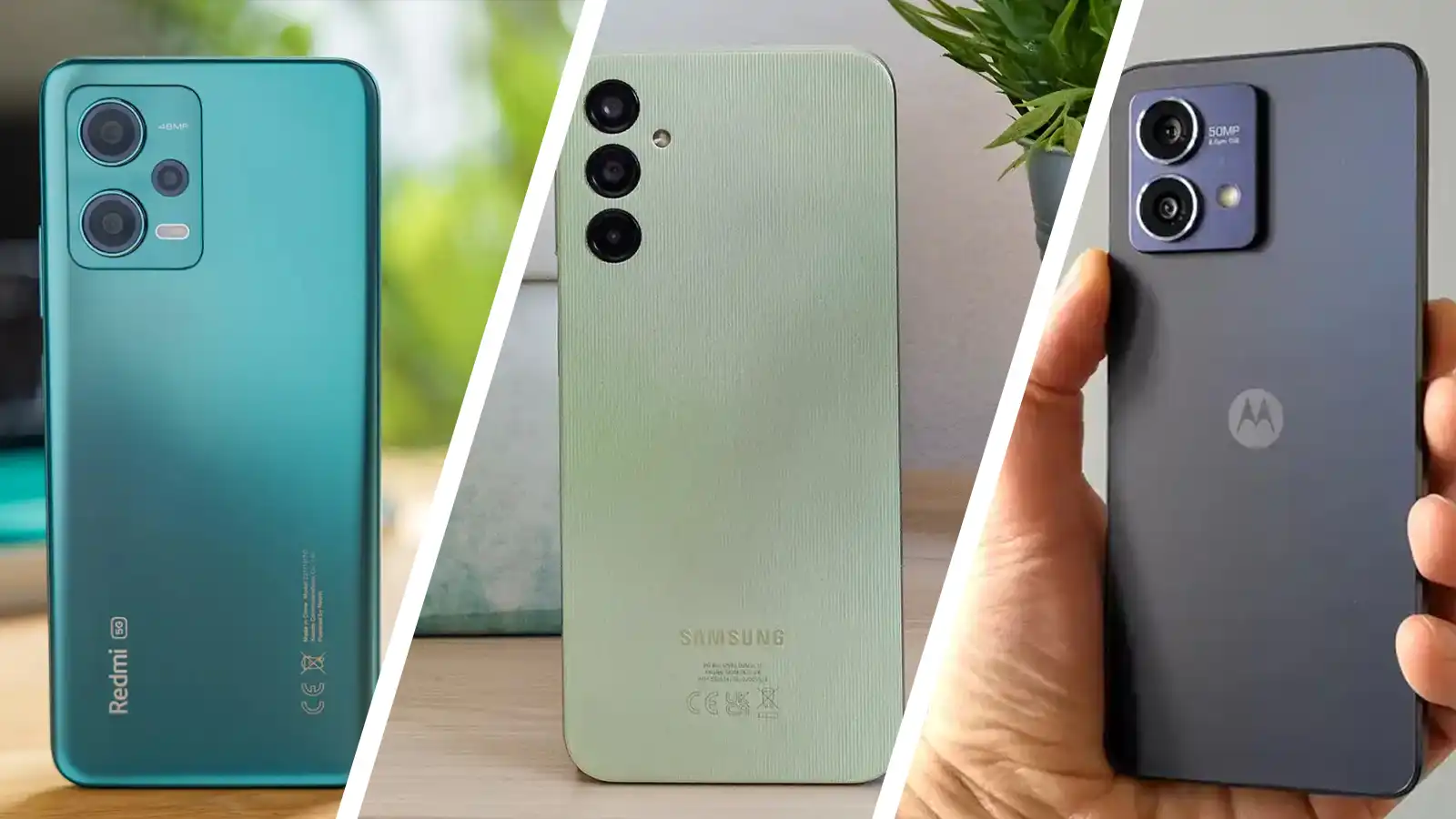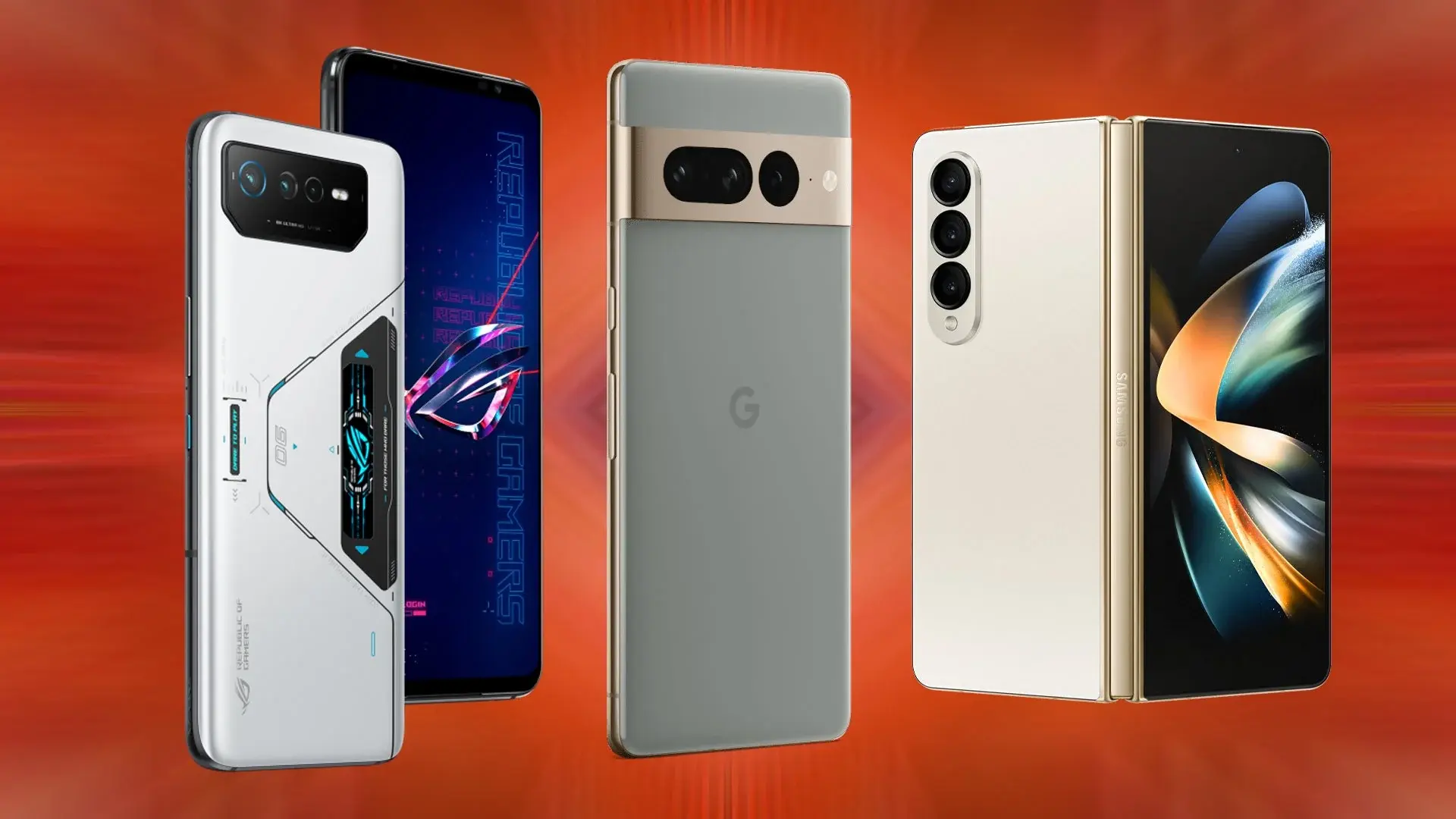The smartphone landscape is constantly evolving, with the gap between flagship devices and their mid-range counterparts seemingly shrinking by the year. This has created a conundrum for consumers: is the extra expense of a flagship phone still justified, or can a mid-range option deliver a near-identical experience at a fraction of the cost?
This article dives deep into the narrowing gap between these two phone categories, exploring the key areas of differentiation and helping you decide which phone best suits your needs and budget.
The Shrinking Battleground: Mid-Range vs. Flagship Smartphones in 2024

Shrinking Performance Gap
Historically, the biggest difference between flagships and mid-range phones was raw processing power. Flagship phones boasted top-of-the-line chipsets that could handle demanding tasks like mobile gaming and video editing with ease, while mid-range phones often struggled. However, this gap has narrowed significantly.
Mid-range chipsets from companies like Qualcomm and MediaTek are now incredibly powerful, offering smooth performance for everyday tasks and even handling some light gaming. Flagship processors still hold an edge in benchmark scores and intensive workloads, but for the average user, the difference is becoming less noticeable.
Camera Capabilities: From Megapixels to Multi-Lens Systems
Camera technology has always been a key battleground for smartphones. Flagship phones typically boast high megapixel counts, multiple lenses with specialized functions (wide-angle, telephoto), and advanced features like optical image stabilization and night mode. Mid-range phones have traditionally offered simpler camera setups with lower megapixel counts.
However, the mid-range camera game is catching up. Modern mid-range phones often sport multi-lens systems, improved image processing algorithms, and decent low-light performance. While they may not capture the same level of detail or offer the versatility of a flagship camera, they can still produce impressive results for everyday use.
Display Technology: A Race for Smoothness and Clarity
Display quality has long been a differentiator, with flagships boasting high-resolution panels with superior refresh rates. These displays offer sharper visuals and a smoother experience when scrolling or gaming. While mid-range phones often used lower-resolution panels with standard 60Hz refresh rates, this is changing.
Many mid-range phones now come equipped with high-resolution displays and smooth 90Hz or even 120Hz refresh rates, providing a noticeably more fluid user experience. The gap in display quality is certainly shrinking, though some flagships may still offer more vibrant colors or higher peak brightness.
Build Quality and Design: Metal vs. Plastic
Flagship phones are known for their premium build quality, often utilizing materials like glass and metal for a sleek and luxurious feel. Mid-range phones typically use plastic for the back panel, which can feel less premium but can also be lighter and more durable.
However, the line is blurring here as well. Some mid-range phones now use high-quality plastics that offer a surprisingly premium look and feel. Additionally, some flagship phones are starting to incorporate more lightweight materials to improve portability.
Software Support: The Long Game
One area where flagships often maintain a clear advantage is software support. Flagship phones typically receive longer update cycles, ensuring they stay secure and up-to-date with the latest features and bug fixes. Mid-range phones may receive shorter update windows or fewer updates overall.
This can be a crucial factor for users who want to keep their phones for several years. However, some mid-range manufacturers are starting to offer extended software support, making this less of a clear-cut advantage for flagships.
The All-Important Factor: User Needs
Now that we’ve explored the shrinking gap between mid-range and flagship phones, the crucial question remains: which one should you choose? Ultimately, the answer depends on your individual needs and priorities.
The Mid-Range Choice: Value Seekers Rejoice
For casual users who primarily use their phones for basic tasks like browsing the web, social media, email, and light gaming, a mid-range phone is an excellent choice. These phones offer excellent performance for everyday use, often have good cameras, and come with beautiful displays. Additionally, their lower price point makes them a great value proposition.
The Flagship Choice: Power Users and Early Adopters
If you’re a power user who demands the absolute best in terms of performance, camera capabilities, and display quality, a flagship phone is still the way to go. These phones offer cutting-edge features, longer software support, and the most powerful processors available. They are ideal for gamers, mobile photographers, and anyone who needs a phone that can handle the most demanding tasks.

Beyond the Specs: Additional Considerations When Choosing Your Phone
While technical specifications are essential, several other factors can influence your choice between a mid-range and a flagship phone. Let’s delve into some of these:
-
Battery Life: Both phone categories are striving for better battery life. Flagships tend to have larger batteries due to their bigger screens, but some mid-range phones are catching up with efficient processors and software optimizations. User behavior plays a significant role, so consider your typical daily usage patterns.
-
Brand and Reputation: Brand loyalty and manufacturer reputation can be important factors. Flagship phones from established brands often come with a sense of trust and a reputation for quality and after-sales service. However, some mid-range manufacturers are building a strong reputation, offering excellent value and reliable devices.
-
Special Features: Look for features that cater to your specific needs. Flagships may offer features like wireless charging, water resistance ratings, or expandable storage, which might not be present on all mid-range phones.
-
Design Aesthetics: Personal preference for design plays a big role. Both flagships and mid-range phones come in a variety of styles and colors. Consider the materials used, the form factor (large screen vs. compact), and the overall aesthetics that resonate with you.
-
Future-Proofing: If you plan on keeping your phone for several years, consider the update cycle. Flagship phones typically receive longer software support, ensuring compatibility with future apps and security patches. This may be crucial if you prioritize a long-lasting device.
Making an Informed Decision: A Step-by-Step Guide
Here’s a step-by-step guide to help you choose the right phone for you:
-
Identify Your Needs: First, prioritize your phone usage. Are you a casual user, a gamer, a mobile photographer, or a combination? Consider the most frequent tasks you’ll be performing with your phone.
-
Set a Budget: Determine how much you’re comfortable spending on a new phone. Flagship phones can be significantly more expensive than mid-range options, so set a realistic budget range and stick to it.
-
Research Your Options: Once you know your needs and budget, research both mid-range and flagship phones within your price range. Read reviews, compare specifications, and watch comparison videos to get a clear understanding of each phone’s strengths and weaknesses.
-
Prioritize Features: Identify the features most important to you. Do you prioritize camera quality, processing power, battery life, display quality, or a specific design element? Focus on phones that excel in your most valued aspects.
-
Consider Future-Proofing: If software updates and long-term use are essential, prioritize flagship phones that offer extended update cycles. However, if you plan to upgrade regularly, a mid-range phone might be sufficient.
-
Don’t Be Afraid to Experiment: With the shrinking gap, some mid-range phones offer exceptional value. Don’t be afraid to consider a mid-range option if it ticks most of your boxes and falls within your budget.
Beyond the Basics: Deep Dives into Specific Needs
While the core decision revolves around general usage patterns, let’s delve deeper into specific needs to refine your phone selection process:
Gizchina News of the week
The Photography Enthusiast:
- Mid-Range Option: Many mid-range phones now boast multi-lens setups with decent image sensors and processing power. Look for phones with features like wide-angle and portrait modes, and consider the presence of Night Mode for low-light photography.
- Flagship Option: Flagship phones offer superior camera systems with high megapixel counts, larger sensors, and advanced features like optical zoom lenses, faster autofocus, and professional-grade video recording capabilities.
The Mobile Gamer:
- Mid-Range Option: Look for mid-range phones with powerful processors and GPUs (graphics processing units) optimized for gaming. Check for features like high refresh rate displays for smoother visuals and compatibility with popular game titles.
- Flagship Option: Flagship phones boast top-of-the-line processors and the latest GPUs designed to handle even the most demanding games with high frame rates and graphical fidelity. They may also offer dedicated gaming modes that optimize performance and battery life.
The Power User:
- Mid-Range Option: Many mid-range phones now offer sufficient processing power for multitasking and running demanding applications. Look for phones with enough RAM (random access memory) to handle multiple apps running smoothly.
- Flagship Option: Flagship phones cater to power users with the most powerful processors and ample RAM for seamless multitasking and resource-intensive tasks like video editing or heavy app usage.
The Battery Life Warrior:
- Mid-Range Option: Some mid-range phones prioritize battery life with large capacity batteries and efficient power management features. Look for phones with features like adaptive battery optimization and the ability to handle all-day use on a single charge.
- Flagship Option: While not always the case, some flagship phones offer large batteries and fast charging capabilities. However, their powerful processors and high-resolution displays can sometimes drain the battery faster.
The Budget-Conscious Consumer:
- Mid-Range Option: Mid-range phones offer excellent value for money, providing good performance, decent cameras, and beautiful displays at a fraction of the flagship price. Look for phones with features that meet your core needs without compromising on quality.
- Flagship Option: Flagship phones typically carry a premium price tag. If budget is a major concern, a mid-range phone might be the smarter choice, especially if you can find one that offers most of the features you need.
The Early Adopter:
- Mid-Range Option: While not always the case, some mid-range manufacturers are starting to adopt the latest technologies found in flagships. Research upcoming mid-range releases to see if they incorporate features you find appealing.
- Flagship Option: Flagship phones consistently showcase the cutting-edge advancements in the smartphone industry. If you crave the newest processors, display technologies, or camera innovations, flagship phones are the way to go.

Pro Tips and Tricks for Choosing Your Perfect Phone
Finding the right phone can feel overwhelming, but with a few insider tips, you can navigate the decision-making process like a pro:
Leveraging Online Resources:
-
Review Aggregators: Websites that compile reviews from various sources can give you a well-rounded perspective on a phone’s strengths and weaknesses. Look for reputable sites with diverse reviewer viewpoints.
-
Tech YouTubers: Tech YouTubers often provide in-depth reviews with real-world usage scenarios. Watch reviews for phones you’re considering to get a feel for their everyday performance.
-
User Forums and Communities: Online communities dedicated to specific phone models or brands can be a goldmine of information. Join relevant forums to learn about common user experiences, ask questions, and discover potential issues.
Optimizing Your Research:
-
Don’t Just Focus on Specs: While specifications are important, prioritize features that directly impact your usage. A high megapixel camera might not be necessary if you rarely take photos.
-
Compare Like-for-Like: When comparing phones, ensure you’re comparing models within a similar price range. This allows for a more realistic evaluation of the value proposition.
-
Read Between the Lines: Marketing materials often focus on headline features. Read reviews with a critical eye to understand the true capabilities and limitations of a phone.
Utilizing Offline Resources:
-
Hands-on at Retail Stores: If possible, visit a retail store and get hands-on with the phones you’re considering. This allows you to assess the size, weight, and overall feel of the phone to see if it’s comfortable to hold and use.
-
Ask the Experts: Retail store staff can be a valuable resource. Ask them specific questions about the phones you’re interested in and their experiences with common customer concerns.
-
Compare Carrier Deals: If you’re purchasing a phone on a carrier contract, compare available deals and promotions. Sometimes, a slightly less expensive phone with a better carrier offer might be the smarter choice.
Making a Strategic Purchase:
-
Consider Last Year’s Flagship: Flagship phones depreciate quickly. Last year’s flagship model might offer similar performance and features to a current mid-range phone at a significantly lower price.
-
Wait for Sales and Promotions: Major retailers and carriers often have sales and promotions throughout the year. Consider waiting for a sale to get the best possible price on the phone you want.
-
Think About Upgradeability: If you plan on keeping your phone for several years, consider phones with expandable storage or features like a removable battery (becoming less common but still available in some models) for increased longevity.
Beyond the Basics: Advanced Tactics for the Savvy Buyer
If you’re a seasoned phone buyer looking to go the extra mile, here are some advanced tactics to optimize your phone selection process:
-
Understanding Benchmarks: While raw specifications are important, benchmarks can provide a more nuanced picture of a phone’s real-world performance. Research benchmark scores for the processors and GPUs in phones you’re considering. This can help you gauge how well they handle specific tasks like gaming or video editing.
-
Prioritizing Battery Tests: Don’t just rely on battery capacity – look for reviews that include real-world battery life tests. These tests simulate typical usage patterns and provide a more accurate picture of how long the phone can last on a single charge.
-
Investigate Display Calibration: Screen quality goes beyond resolution and refresh rate. Look for reviews that mention display calibration. A well-calibrated display offers accurate colors and a more enjoyable viewing experience.
-
Considering Used or Refurbished Phones: The used phone market offers significant savings, but proceed with caution. Only buy from reputable sellers and ensure the phone is in good working condition with a valid warranty (if applicable). Refurbished phones offered directly by manufacturers or trusted retailers can be a great option, often coming with a warranty and at a discounted price.
-
Exploring Alternative Operating Systems: While Android and iOS dominate the market, consider niche options like phones running Ubuntu Touch or Sailfish OS. These offer a different user experience and might appeal to users seeking a more open and customizable platform. However, be aware of app availability and potential compatibility issues.
-
The Importance of After-Sales Support: Research the manufacturer’s reputation for after-sales support. Look for brands known for offering timely software updates, easy access to customer service, and readily available repairs when needed.
-
The Trade-In Option: Many retailers offer trade-in programs, allowing you to reduce the upfront cost of a new phone by trading in your old one. Research trade-in values for your current phone to see if it makes financial sense to utilize this option.
Remember, the best phone selection strategy is an ongoing process. Stay informed about new releases, keep an eye on evolving technologies, and don’t be afraid to revisit your initial decision as your needs or priorities change. By employing these advanced tactics, you can ensure you’re getting the most out of your hard-earned money and selecting a phone that will continue to serve you well for years to come.





